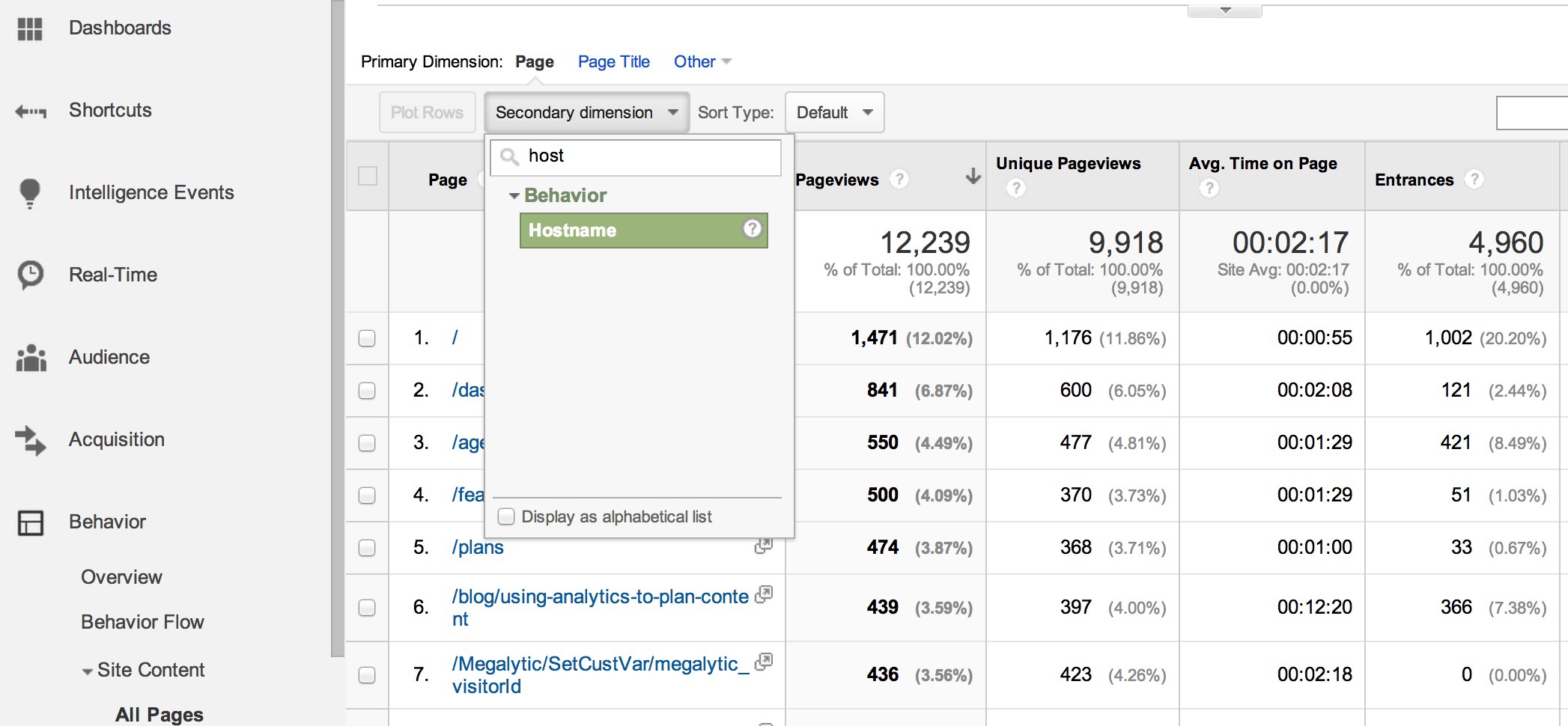A Comprehensive Overview to 'Secondary Dimensions' in Google Analytics: Insights Revealed
Wiki Article
Translating the Significance of Second Dimension in Google Analytics: All Concerning Its Significance and Impact
In the realm of digital analytics, the application of additional measurements within Google Analytics serves as a critical device for critical much deeper layers of information understandings. The significance of additional measurements lies in their ability to offer a nuanced view of user behavior and interaction with an internet site or system.Recognizing Secondary Measurements in Google Analytics
The understanding of second measurements in Google Analytics is important for obtaining much deeper insights into user actions and site performance. While key dimensions supply fundamental information factors such as website traffic sources and web page views, second dimensions enable for an extra nuanced evaluation by providing additional context to these key metrics. By incorporating secondary dimensions, customers can section and filter their data to uncover patterns and fads that might not be instantly noticeable.
Unveiling the Benefits of Secondary Measurements
Structure upon the fundamental understanding of additional dimensions in Google Analytics, checking out the benefits they provide reveals invaluable understandings for enhancing information analysis and decision-making. By incorporating secondary measurements, customers can dig much deeper into their data, acquiring a much more detailed sight of user actions, content performance, and various other crucial metrics.Additionally, additional measurements provide context to primary information, offering additional layers of details that can help in recognizing user communications and preferences. This boosted understanding can assist tactical decision-making, causing even more targeted advertising and marketing campaigns, web site optimizations, and total better efficiency. Fundamentally, second dimensions act as an effective device for opening much deeper insights and maximizing the utility of Google Analytics for organizations and web site proprietors.
Leveraging Additional Measurements for Enhanced Insights
By utilizing the power of second dimensions in Google Analytics, businesses can discover much deeper insights that drive educated decision-making and tactical optimization efforts. Leveraging additional dimensions permits businesses to dig beyond surface-level information and gain a much more comprehensive understanding of customer habits, audience demographics, website traffic resources, and web site performance. For example, by integrating primary measurements like web traffic sources with additional measurements such as geographical area or device category, businesses can determine which gadgets or areas are driving the most useful website traffic to their site.Additionally, second dimensions enable businesses to sector and analyze data much more effectively, aiding them determine trends, patterns, and possibilities that may have description or else gone undetected. By utilizing additional dimensions, services can customize their advertising methods, web content, and user experience to better meet the requirements and preferences of their target audience. In significance, leveraging additional dimensions in Google Analytics empowers organizations to make data-driven choices that result in boosted efficiency, increased ROI, and sustainable growth.

Effect of Additional Dimensions on Information Evaluation
Enhancing data analysis through the use of secondary measurements in Google Analytics gives companies with a much deeper understanding of their on-line efficiency metrics. By integrating additional dimensions, such as time of day, geographic place, or tool classification, companies can uncover useful understandings that might have been forgotten with key dimensions alone. This improved degree of granularity permits more specific division of data, allowing services to determine patterns, patterns, and relationships that can drive calculated decision-making.
Making The Most Of Possible: Second Dimensions Strategies
The strategic use of second dimensions in Google Analytics extends beyond boosting data analysis; it includes crafting targeted strategies to unlock the complete possibility of beneficial understandings for business development. By utilizing second dimensions properly, companies can delve deeper right into their site web traffic, user behavior, and marketing campaigns to draw out actionable insights. One vital technique is to integrate additional measurements with primary dimensions to obtain a detailed sight important link of user interactions. Combining the key measurement of 'source/medium' with additional measurements like 'touchdown web page' or 'tool category' can reveal which networks are driving traffic to details pages or exactly how individual actions varies across gadgets.Additionally, utilizing secondary dimensions to section information based on customer demographics, behavior, or technology can assist businesses customize their advertising initiatives to specific target market segments. This targeted technique can lead to boosted conversion prices, improved individual experiences, and inevitably, enhanced ROI. By taking full advantage of the potential of second measurements in Google Analytics, organizations can make educated decisions, maximize their on-line visibility, and drive sustainable growth.
Verdict
Finally, second dimensions in Google Analytics play a vital duty in giving much deeper insights and enhancing data analysis. By utilizing additional dimensions effectively, organizations can gain a more extensive understanding of user habits and website performance. Integrating second dimensions into data analysis methods can cause even more educated decision-making and enhanced total efficiency. It is necessary for businesses to utilize the power of additional measurements to maximize their potential and accomplish higher success in their online ventures (what is a “secondary dimension” in google analytics?).While primary dimensions give essential data factors such as web traffic resources and page views, additional measurements enable for an extra nuanced evaluation by giving added context to these key metrics. By incorporating primary measurements additional info like traffic sources with second measurements such as geographical location or tool classification, businesses can recognize which areas or devices are driving the most valuable website traffic to their web site.
By integrating second measurements, such as time of day, geographical area, or tool classification, companies can reveal beneficial understandings that may have been ignored with primary dimensions alone. One crucial approach is to integrate secondary dimensions with main dimensions to get a detailed sight of user interactions. Combining the main dimension of 'source/medium' with second dimensions like 'landing page' or 'gadget classification' can disclose which networks are driving web traffic to certain pages or just how customer actions varies throughout gadgets.
Report this wiki page